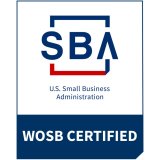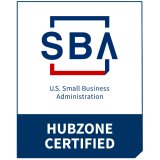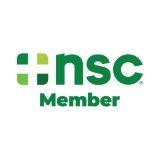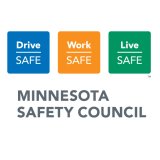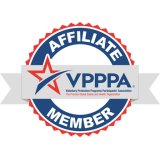Hearing Loss and OSHA 300 Log
 According to the U.S. Bureau of Labor Statistics, occupational hearing loss represents one-third of work-related illnesses reported annually in the manufacturing sector. In 2015, a total of nearly 17,000 cases of hearing loss were reported by private industries nationwide. OSHA recently issued a new interpretation regarding how to consider an employee's use of hearing protection when determining if a hearing loss is work-related.
According to the U.S. Bureau of Labor Statistics, occupational hearing loss represents one-third of work-related illnesses reported annually in the manufacturing sector. In 2015, a total of nearly 17,000 cases of hearing loss were reported by private industries nationwide. OSHA recently issued a new interpretation regarding how to consider an employee's use of hearing protection when determining if a hearing loss is work-related.
As part of a hearing conservation program, companies conduct baseline and annual audiometric testing for their noise-exposed workers. Based on results, employers must record on the OSHA 300 Log any cases of work-related hearing loss that meet the following criterion:
1. Standard Threshold Shift (STS): an average change of 10 dB or more at 2000, 3000, and 4000 Hz in either ear compared to the baseline hearing test (age-adjustments allowed),
AND
2. Hearing Loss/Impairment: the employee's average hearing level at the same frequencies in the same ear is 25 dB HL or greater (regardless of employee's age).
It is important to remember that not all shifts in hearing are due to noise on the job. Medical concerns or non-occupational noise can also cause changes in hearing. For this reason, a professional case-by-case review is recommended. OSHA states that hearing loss work-relatedness must be determined according to specifications of section 1904.5. If an event/exposure in the workplace caused or contributed to the shift in hearing or "significantly aggravated" a previously existing hearing loss, then the case is considered recordable. OSHA's latest interpretation clarifies how to consider a worker's use of hearing protection as part of the review process.
"First, OSHA does allow the worker's use of hearing protection to be considered by an employer when making determinations of work relatedness. However, this should not be the sole criterion in such determinations, nor should the determination be reduced to an equation. Under OSHA's recordkeeping regulation, an employer must consider many factors when determining whether hearing loss is work-related, and such determinations must be made on a case-by-case basis." (OSHA, 2016)
For more information:
Overview: Recording Occupational Hearing Loss on the OSHA 300 Log, by Susan Cooper, PhD, CAOHC Update, 2013.
Regulations and Interpretations:
Federal OSHA:
Regulation: 29 CFR, 1904.10. Recording criteria for cases involving occupational hearing loss. OSHA, 66 FR 6129, Jan. 19, 2001; 66 FR 52034, Oct. 12, 2001; 67 FR 44048, July, 1, 2002; 67 FR 77170, Dec. 17, 2002
OSHA (2003). Interpretation letter dated 5/8/03 from Richard E. Fairfax, Director, Directorate of Enforcement Programs to Linda Ballas, regarding audiogram baseline revision.
OSHA (2003). Interpretation letter dated 8/14/03 from Richard E. Fairfax, Director, Directorate of Enforcement Programs to Joan E. Piosa, regarding STS retests.
OSHA (2004). Interpretation letter dated 3/4/04 from Frank Frodyma, Acting Director, Directorate of Evaluation and Analysis, to Carl Sall, regarding timeframe for retests, line-outs, and application of 1904.10 to the construction industry.
OSHA (2005). Interpretation letter dated 9/9/05 from Richard E. Fairfax, Director, Directorate of Enforcement Programs to Laurie Wells, President of NHCA, regarding audiometric baseline revision.
OSHA (2007). Interpretation letter dated 8/29/07 from Keith Goddard, Director, Directorate of Evaluation and Analysis to Theresa Schulz, CAOHC Chair, regarding audiometric reviewer qualifications.
OSHA (2016). Interpretation letter dated 4/29/16 from Thomas Galassi, Director, Directorate of Enforcement Programs to Richard Stepkin, regarding consideration of hearing protection use in determining work-relatedness for purposes of recording occupational hearing loss on Form 300.
OrOSHA: Oregon Administrative Rules, Chapter 437, Division 1, Recordkeeping and Reporting, 437-001-0700 (11)(b): Occupational Hearing Loss Recording Criteria.
WISHA: Washington Chapter WAC 296-27-01113 Recording criteria for cases involving occupational hearing loss. h
Professional Guidelines:
NHCA (2011). Guidelines for Recording Hearing Loss on the OSHA 300 Log, National Hearing Conservation Association, approved by the Executive Council on April 26, 2011.
NHCA (2013). Guidelines for Audiometric Baseline Revision, National Hearing Conservation Association, approved by the Executive Council on February 20, 2013.
| Categories: | Hearing & Hearing Loss, Hearing Conservation Programs |

